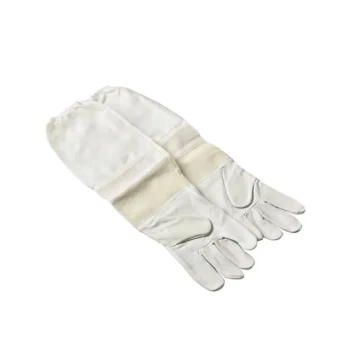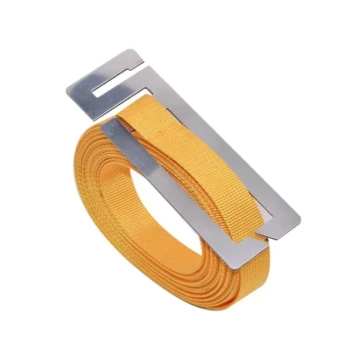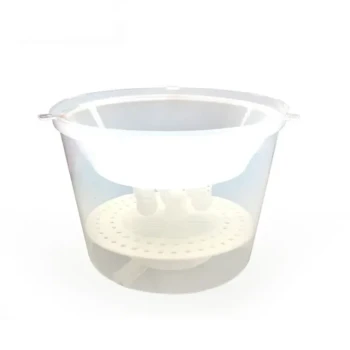To test the fit of beekeeping gloves, you must go beyond simply trying them on. A proper evaluation involves a series of dexterity tests that simulate real hive work. Ensure the gloves are snug without being tight, allowing you to make a full fist and spread your fingers wide without pinching. Critically, there should be no excess material at the fingertips, as this will severely limit your ability to handle frames and work precisely.
The ideal beekeeping glove is not merely a protective covering; it is a functional tool. The right fit strikes a critical balance between preventing stings and enabling the dexterity required for calm, confident, and safe hive management.
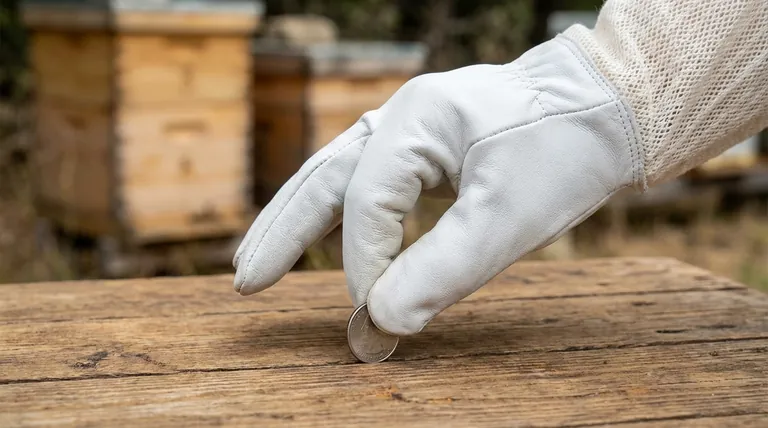
Why Glove Fit is a Critical Safety Decision
Choosing a beekeeping glove is not a matter of comfort alone. The fit directly impacts your safety and the well-being of your bees. A poor fit in either direction—too loose or too tight—creates distinct and serious problems.
The Goal: A Balance of Protection and Dexterity
Your gloves must serve two opposing functions. They need to be a robust barrier against stings, with no gaps for bees to crawl into.
At the same time, they must allow for the dexterity needed to perform delicate tasks, such as lifting frames without crushing bees, inspecting brood, or marking a queen.
The Risk of a Poor Fit
Gloves that are too loose are a significant liability. The excess material can snag on hive components, leading you to make clumsy, jerky movements that agitate the colony. This clumsiness also increases the risk of dropping a frame or crushing bees, which releases alarm pheromone and can trigger a defensive response.
Gloves that are too tight are equally problematic. They restrict blood flow, leading to hand fatigue and numbness during longer inspections. A tight fit also stretches the material, potentially making it thinner and easier for a bee's stinger to penetrate.
The Glove Fitting Protocol: A Practical Guide
Use these simple tests to assess any pair of gloves before you commit.
Test 1: The Basic "Snugness" Check
A properly fitted glove should feel like a second skin. It should be snug across your palm and the back of your hand without feeling restrictive.
Pay close attention to the space between your fingers. You should not feel any significant pinching or webbing when you spread your hand wide.
Finally, and most importantly, check the fingertips. There should be minimal to no empty space at the end of your fingers.
Test 2: Simulating Hive Work
With the gloves on, perform these simple actions to mimic beekeeping tasks.
- The "Pinch and Pull": Try to pick up a thin, flat object like a credit card or a coin from a tabletop. This simulates the fine grip needed to lift the edge of a propolis-sealed inner cover or the end of a frame. If you can't do this easily, the gloves are too clumsy.
- The "Full Range of Motion": Make a tight fist, then open your hand and spread your fingers as wide as possible. The glove should not fight your movement or feel excessively tight.
- The "Tool Grip": Pick up a pen or your hive tool. You should be able to get a secure, confident grip without the tool feeling like it might slip.
Understanding the Trade-offs: Material vs. Fit
The type of material profoundly influences how a glove should fit.
Thicker Gloves (e.g., Cowhide Leather)
These gloves offer the highest level of sting protection but inherently limit dexterity. For this reason, a snug fit is non-negotiable. Any looseness will amplify their natural clumsiness, making delicate work nearly impossible.
Thinner Gloves (e.g., Goatskin, Nitrile)
These gloves provide superior dexterity and a better "feel" for the hive. Their protection comes from being a barrier, not from thickness. A perfect fit is crucial to ensure there are no folds or wrinkles that a bee could grab onto to leverage a sting.
Making the Right Choice for Your Goal
Select your gloves based on your experience level and primary objective.
- If your primary focus is maximum protection (e.g., new beekeeper): Choose a thicker material like cowhide or a well-ventilated synthetic, but prioritize a snug fit to minimize clumsiness.
- If your primary focus is maximum dexterity (e.g., experienced beekeeper): Choose a thinner material like goatskin and demand a perfect, "second-skin" fit with no excess material at the fingertips.
- If you want a versatile balance: Goatskin is often the ideal compromise. Focus on finding a pair that passes the "Pinch and Pull" test while still feeling substantial.
A well-fitted glove is one of your most important tools for calm, confident, and effective beekeeping.
Summary Table:
| Test | Action | Goal |
|---|---|---|
| Snugness Check | Make a fist, spread fingers | No pinching, minimal fingertip space |
| Pinch & Pull | Pick up a coin or credit card | Simulate fine grip for frames & covers |
| Tool Grip | Hold a hive tool or pen | Secure grip without slipping |
| Material Consideration | Assess cowhide vs. goatskin | Match thickness to experience level |
Get the Perfect Fit for Your Apiary
As a commercial beekeeper or distributor, clumsy gloves cost you time and agitate colonies. HONESTBEE supplies professional-grade beekeeping gloves designed for the precise demands of hive work. We offer a range of materials—from durable cowhide for maximum protection to supple goatskin for superior dexterity—in sizes that ensure a secure, functional fit.
Let us equip your operation with gloves that enhance safety and efficiency.
Contact HONESTBEE today to discuss wholesale pricing and find the right fit for your team.
Visual Guide
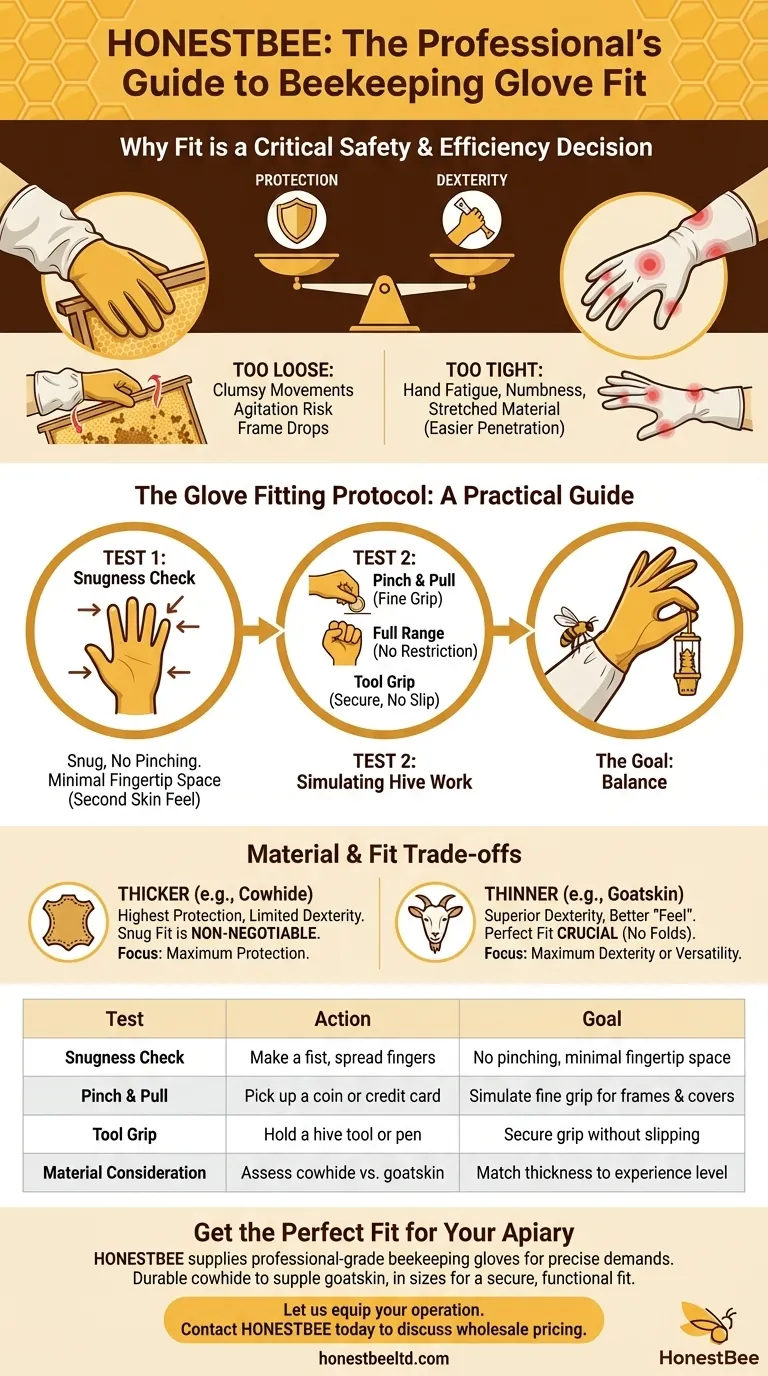
Related Products
- Mesh Ventilated 3 Layer Goatskin Beekeepers Gloves for Beekeeping
- Goatskin Leather Beekeeper Gloves with Vent Long Sleeve for Beekeeping Honey Bee Sting Proof Protection
- Goat Skin Leather Bee Sting Proof Beekeeping Gloves with Canvas Sleeve
- Professional Drop-Style Hive Handles for Beekeeping
- HONESTBEE Professional Long Handled Hive Tool with Precision Cutting Blade
People Also Ask
- What factors should be considered when choosing beekeeping gloves? Balance Protection and Dexterity for Your Apiary
- What factors should be considered when selecting beekeeping gloves? Balance Protection and Dexterity
- What are the key considerations for the fit of beekeeping gloves? Ensure Dexterity & Safety
- How do beekeeping gloves increase comfort during long sessions? Enhance Focus and Reduce Fatigue
- What is the recommendation for beginning beekeepers regarding gloves? Build Confidence and Safety

